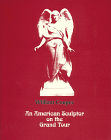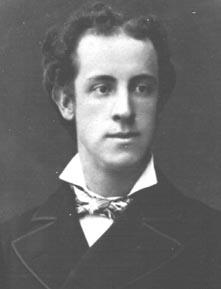| Biography: Couper, William (1853-1942) |
|
Click photos to enlarge. |
An American Sculptor on the Grand Tour: Biography of William Couper. TreCavalli Press, Los Angeles. $34.95, hard bound, acid-free paper, 141 photos. To order send e-mail to: Info @ Wingedsun.com William Couper was one of Americas most noted sculptors of the latter 19th-early 20th century. His realistic, dignified portrayals of military heroes, historical figures, and other public figures and of allegorical figures representing literary and moral subjects are seen in numerous public places, institutions, and museums. Among these are a series of monuments for the National Military Park in Vicksburg; fourteen busts of scientists for the American Museum of Natural History in New York City; the Sailors Memorial at the U.S. Naval Academy in Annapolis; and one of his most famous sculptures the Confederate Soldier standing atop the Confederate Monument in Norfolk, VA. Couper's works reflect the neoclassic and idealistic style favored by all the forms of art at the time. Born in Norfolk, Virginia, on September 20, 1853, he began his studies in sculpture after watching Italian craftsmen carving marble in his fathers business, the Couper Marble Works. He then attended Cooper Union in New York City, and in 1872 embarked on an educational trip to Europe. His sponsor was noted Richmond sculptor Edward Valentine. Couper was introduced to and trained in the Victorian and European style while on the "Grand Tour," a customary tour of the Continent to view and study the famous art treasures of the past. After beginning his studies in Dresden, Germany, he eventually ended up in Florence, Italy. For most artists, the Grand Tour lasted about two years but Couper stayed in Italy for more than twenty years, accompanied by other well-known and highly-regarded American sculptors, notably Thomas Ball, the Hiram Powers Family, Joel T. Hart, Anne Whitney, Frank Duveneck, and Daniel Chester French. Couper married Eliza Chickering Ball, and became Thomas Balls son-in-law and partner at the studio Villa Ball, in Florence, Italy. Returning to America in 1897, Couper opened a studio in New York City with his father-in-law, sculptor Thomas Ball, and built an Italianate home in Montclair, New Jersey. He was a founding member of the Montclair Art Museum, and was best known for his portrait busts and allegorical works. He retired in 1913, and spent the remaining years of his life painting seascapes from the memory of his many trans-Atlantic voyages between Italy and the United States. William Couper died on June 22, 1942, at his son's home in Maryland. The Norfolk Landmark (Jan 31, 1884) wrote a fitting statement about Couper's works: "Perhaps the highest praise we can give him is to say that to forms of great beauty, the beauty of health, and faultless anatomy, he adds lovely faces which are not Greek. Best of all, every conception he has embodied is pure and tender." ------------------------------------------------------------- Greta Elena Couper, Ph.D., is the great-granddaughter of sculptor William Couper. She is a writer and educator in Los Angeles, California, and concentrates her research on 19th century art history and the psychology of travel. |

